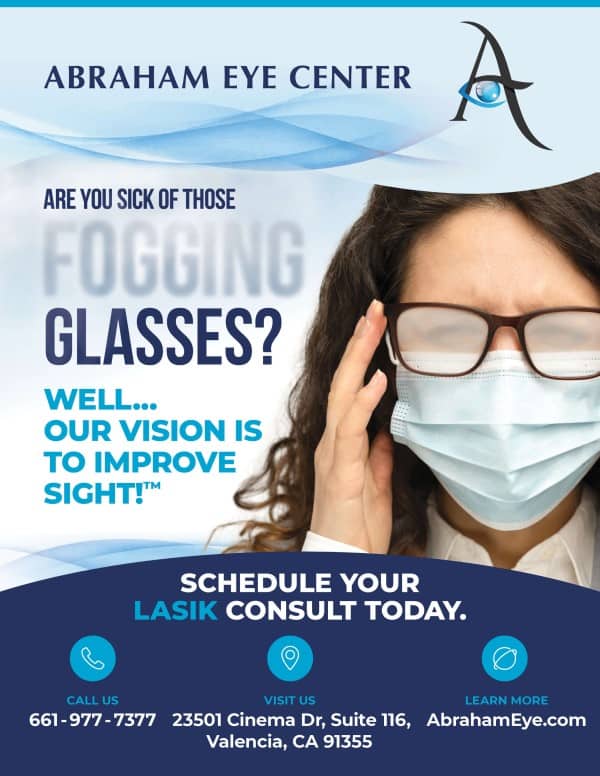Comparing Photorefractive Keratectomy (PRK) vs Lasik
Many individuals have heard of LASIK refractive surgery, but have not heard about other options. One of the most common alternatives is a surgery called Photorefractive Keratectomy, or PRK.
Anatomy Review: The Cornea
To best understand refractive surgery in general it is best to have a basic understanding of the eye’s anatomy.
There are two major parts to an eyeglass prescription—correction of corneal curvature and correction of lens power.
The lens in the middle-most structure of the eye. It is flexible and used to bend rays of light so that they land correctly on the back most structure—the retina—for light detection and transmission to the brain.
The lens accomplishes this task based on where the object you are focusing on is located—up close or far away—through a process called accommodation.
With age, (typically around the age of 45) the lens loses some of its flexibility in a condition called presbyopia. Everyone undergoes these changes, and will eventually need reading glasses in order to view objects up close (reading a book, looking at a cellphone, computer work, etc.).
Presbyopia and lens changes are NOT altered in refractive surgery.
What can be changed with refractive surgery is corneal contour.
The cornea is the front most, clear structure of the eye. It is also responsible for altering the path of light rays so that light lands on the retina. However the cornea does not flex.
The cornea can be perfectly spherical or it can have slightly different radii of curvature across the surface (creating astigmatism).
If a corneal curvature is too steep, it creates a myopic (minus) refractive error as it bends light too much. This causes light rays to come in to focus in front of the retina, thus creating blur on the retina.
If a corneal curvature is too shallow, it creates a hyperopic (plus) error as light rays not bent enough. This causes light rays to come in focus behind the retina, thus creating blur on the retina.
The cornea consists of 5 layers—the epithelium, Bowman’s layer, stroma, Descemet’s membrane, and the endothelium.
The stroma is the thickest middle-most layer that is altered in refractive surgeries.
What is PRK?
PRK is an outpatient procedure in which the corneal contour is altered.
An ophthalmologist will use a laser to remove the two most anterior layers of the cornea—the epithelium and Bowman’s layer—to attain access to the stroma.
Once the stroma is exposed, the doctor will use the laser to essentially shave away part of the stroma to reshape it to correct your prescription.
If you are a hyperope (have a plus prescription) the doctor will steepen the central cornea. If you are a myope (minus prescription) the doctor will flatten the central cornea.
If you have astigmatism the doctor will flatten some parts more than others to make the radii of curvature spherical and correctly land on the retina in all meridians.
Why Should I Consider PRK over LASIK?
The major difference between PRK and LASIK is that the LASIK procedure creates a flap out of the epithelium and Bowman’s membrane, it is not completely removed.
The flap is fragile, especially with for first few months following surgery, and care needs to be taken to ensure it is not pulled open, exposing the eye to pain and infection.
Since PRK does not have a flap, it tends to be the surgery of choice for active individuals—those in the military, martial arts, divers, athletes, etc.
Being flapless also opened opportunity for surgery for higher prescriptions or thinner corneas. Therefore, some individuals who may not be candidates for LASIK could qualify for PRK.
On the other hand, since it does not have a flap PRK also has a longer initial recovery period of 4-5 days of blurred vision, and the need to take things a little easier for 2-4 weeks following the procedure.
The increase in recovery time is because the epithelium will need to regrow, which takes about 1 week. During this time, the doctor will place a contact lens on the eye to help with pain management.
Once the cornea has completely recovered, most patients with PRK do not have new complications.
If you or someone you know is interested in refractive surgery, now is a better time than ever to discuss options with your eye doctor.
Your doctor will take several measurements to determine if you would be a potential candidate for surgery, and chat with you about your lifestyle and expectations to help you decide one which surgery would best suit your needs.
Dr. Nathan Abraham and the staff of the Abraham Eye Center specializes in cataract surgery, LASIK, PRK, and various corneal surgeries. Call our ophthalmologist in Valencia, CA today at 661-977-7377 or schedule an appointment online if you are interested in PRK (Photorefractive Keratectomy) surgery. Our eye doctor provides only the highest quality eye care and surgical services amongst eye doctors in the Valencia California area.
Request Appointment
You can schedule your next appointment with us online!
Connect With Us
Let’s continue the conversation over on your social network of choice.


0 Comments